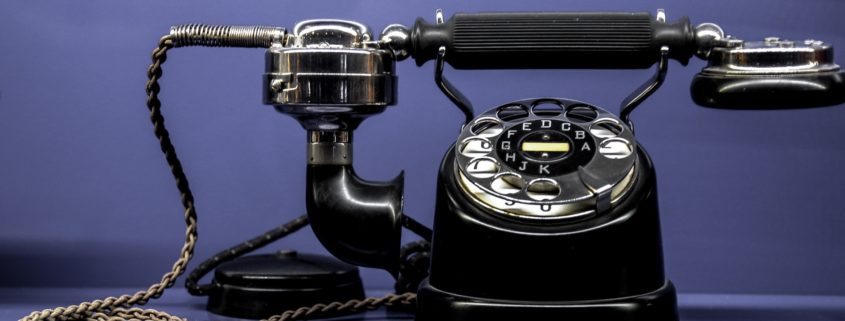How to Make a Compelling Phone Call
Just because you use something often doesn’t mean you use it well, or even correctly. That’s right: I’m talking about the telephone. Don’t hide behind technology; take advantage of it by placing a call wherever and whenever you want to whoever your persuasion target may be — from anywhere in the world.
Skip email. Skip Skype. And skip texting. Instead, actually use the phone!
Here’s how to make an effective and persuasive phone call:
1. Remember that it’s imperative to communicate your professionalism and start a conversation. Business relationships — all good relationships, really — start with a conversation. Which means you must comport yourself in a manner that makes you accessible to the largest number of targets. That is why early phone conversations need to be polite, upbeat and neutral in tone.
For example, when I call old friends, especially friends from back home in Philly, I may respond to their “Hello?” with a casual “Yo! Tommy! What’s goin’ on?” I use the regional language (in the Philadelphia area, “yo” has the poly-utility of being a greeting, a question or an affront), I call Tommy by name, and I’m colloquial in my speech (“goin’ ”).
I would never use that kind of greeting in a business situation with someone I’ve never met or don’t know very well. Doing so is too risky. Instead, identify yourself by first and last name, the organization you represent and the reason you’re calling. Then inquire if your target has a few minutes to talk, and restate the purpose of your call — perhaps reminding the person on the other end when and where you met or about previous conversations.
2. Make your objective neither underhanded nor manipulative. Rather, you want to persuade the person your calling to meet you face-to-face, so you’ll be able to prove your point — which can be anything from winning that individual’s business to gaining support for an idea or looking for an ally. The best way to accomplish all of those things is in person.
3. The best way to broach an in-person meeting is by wrapping up your conversation with these six words: “Here’s what I’m going to recommend.” And then explain your recommendation. When you use the word “recommend,” you leverage the principle of authority. You’re the expert here, and when experts give advice, people are inclined to take it. Terms such as “recommend,” “suggest” and “advise” work particularly well for reinforcing this point. Be sure your recommendation includes at least two options, thus avoiding the clichéd “either/or” close, which often creates something called “reactance” — meaning that your target feels a choice is being forced upon him, so his immediate reaction would be to say “no” to both options. Concluding your recommendation by asking, “Do either of those times work for you?” can make a world of difference.
If a face-to-face session is not possible, ask your target for a date and time that works for him, and sign off by requesting permission to call him back in the meantime if you have additional questions or would like to bounce other ideas off him. Your target will feel appreciated and respected, and will most likely respond with a resounding, “Sure — not a problem!”
You’ll be amazed by how one properly executed phone call will open new doors to persuasion success.












Leave a Reply
Want to join the discussion?Feel free to contribute!